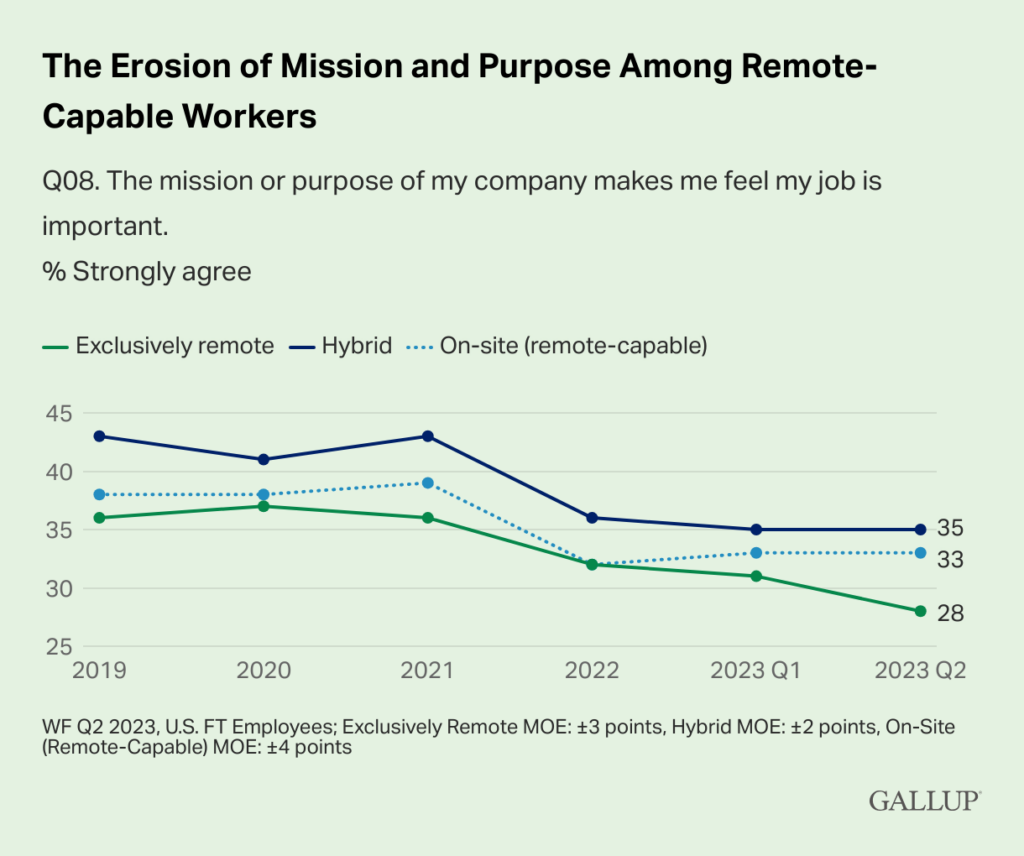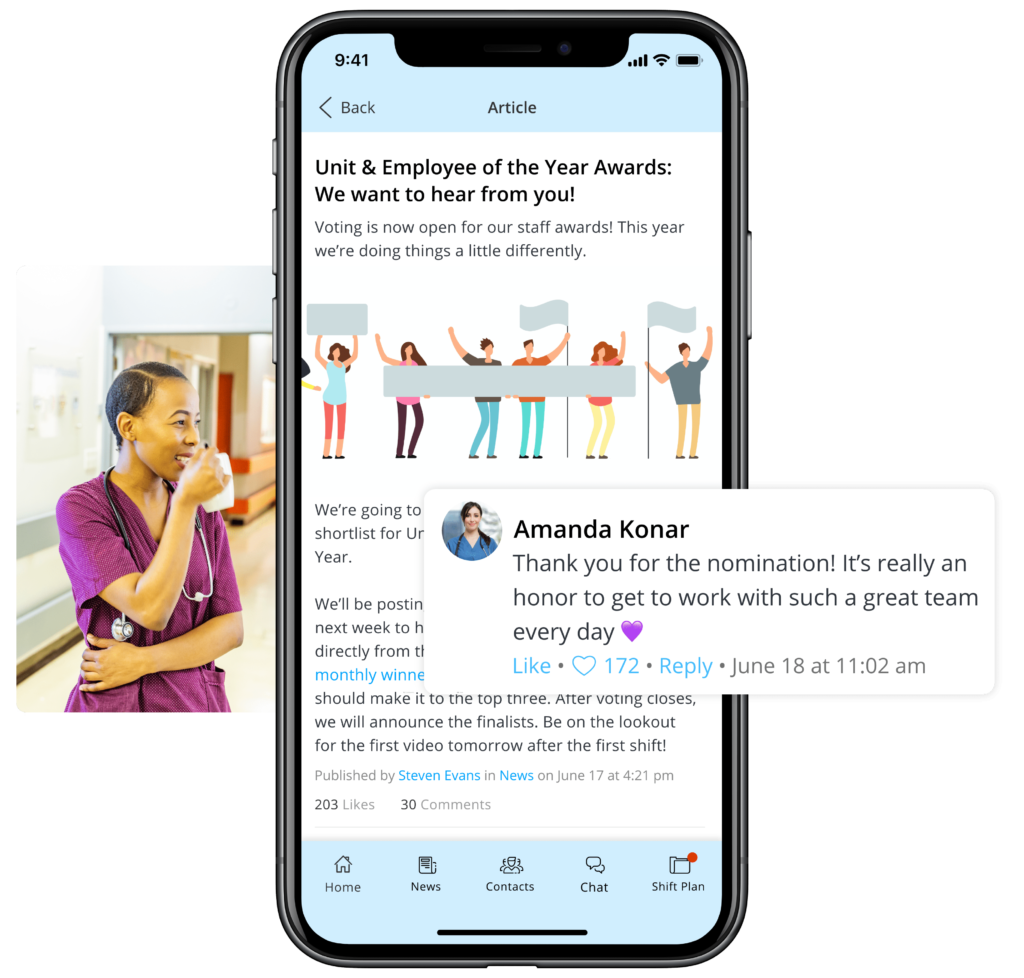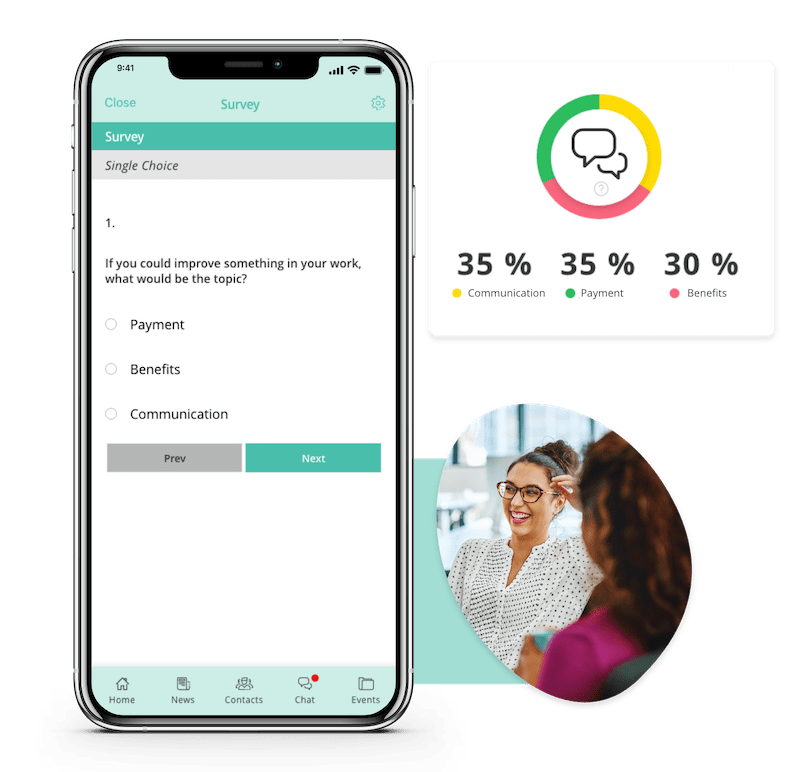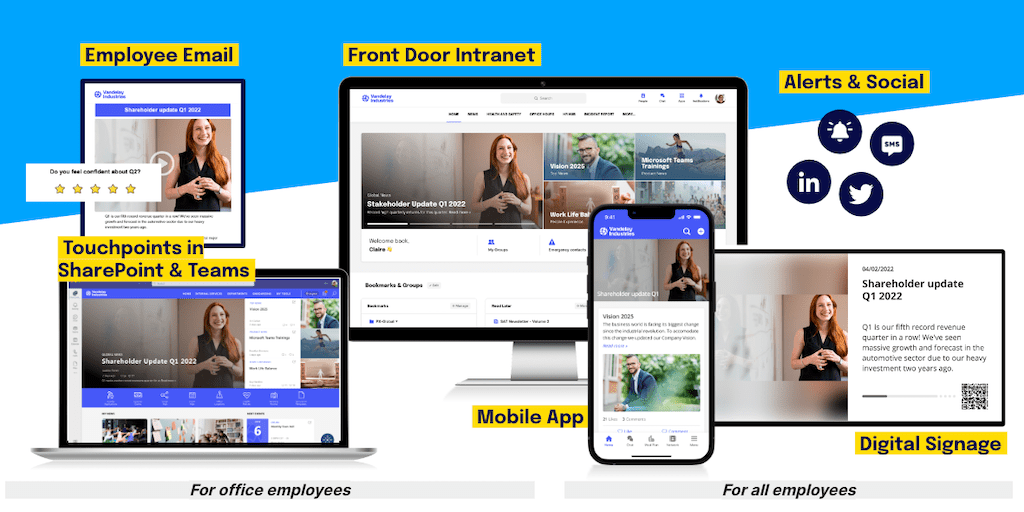How to Engage Remote Employees: 10 Strategies and Activities for Success
As the number of remote workers rises, so does their lack of engagement. Could consistent, relevant, and strategic communication be the cure?

It’s said that “distance makes the heart grow fonder.” That may be true in matters of the heart, but for employers and their remote employees, a more fitting idiom might be: “Out of sight, out of mind.” That’s a real problem if you’re concerned, as many executives are, that your distributed workforce lacks the kind of engagement that leads to better organizational performance and success.
According to Forbes, in 2023 12.7% of full-time U.S. employees were working remotely from home while 28.2% were working a hybrid model. By 2025, 32.6 million Americans are expected to be working remotely. As their numbers rise, more and more of these people report feeling disconnected from the mission of their employers. Gallup reports that only 28% of exclusively remote workers feel that “the mission or purpose of my company makes me feel my job is important.” That matches an all-time low for this group, set in 2011.
 The Erosion Of Mission And Purpose Among Remote-Capable Workers
The Erosion Of Mission And Purpose Among Remote-Capable Workers
And what about the estimated 2.7 billion frontline workers? After receiving well-deserved praise as indispensable heroes during the Covid-19 lockdowns, many today once again report feeling “expendable.”
Remote and frontline workers face similar challenges
Engaging both of these cohorts is proving difficult for employers. That’s why, for the purposes of this article, we’re including people working from home and people working frontline jobs in our definition of “remote employees.” However, understanding their differences will help in managing, supporting, and developing policies tailored to the needs of each group. Here are a few key differentiators:
Location: Remote workers can work from anywhere with internet access; frontline workers are location-specific.
Tasks: Remote work involves computer-based tasks; frontline work involves direct, often physical tasks.
Communication: Remote workers use digital tools for communication; frontline workers rely more on face-to-face interaction.
Flexibility: Remote work offers more flexibility in schedule and location; frontline work usually has fixed schedules and specific locations.
Technology: Both types use technology, but the dependency on computer-based systems is higher for remote workers.
Balancing the needs and expectations of these two distinct groups while fostering a unified organizational culture takes careful planning and continuous adjustment. That being said, the benefits of employee engagement are well worth the time and effort.
So why is it so difficult?
The challenges of remote workers
Managing remote and frontline workers presents several significant challenges. The greatest issue is communication, or, to be more exact, the lack of it. Even the best employee engagement ideas will fail unless you’re ensuring consistent and effective communication. But this can be difficult, especially when team members are dispersed across different locations and time zones. It can lead to misunderstandings, delays in information sharing, and a lack of cohesion within the team.
Remote workers may also struggle with feelings of isolation and disconnection from the company culture. These feelings can impact morale and productivity. For frontline workers, there are unique challenges related to the physical demands of their roles and the need for immediate, on-site decision-making, which can be hindered by remote management.
Ensuring both groups have access to necessary resources and support, including technology, training, and mental health services, is essential but often complicated. Moreover, maintaining consistent performance evaluations and career advancement opportunities for remote and frontline workers alike requires robust and adaptable HR policies.
Why employee engagement is important for remote employees
We’ve said it before and we’ll say it again: Employee engagement is crucial for remote and frontline employees. It has a direct impact on productivity, job satisfaction, and overall well-being. Engaged employees are more likely to feel motivated, take initiative, and contribute positively to the organization’s goals. This is especially important for remote workers who may struggle with feelings of isolation and disconnection.
For frontline employees, engagement is vital as it influences their interactions with customers and the quality of service they provide. High levels of engagement lead to lower turnover rates, reducing the costs and disruptions associated with frequent hiring and training. Engaged employees are more likely to be loyal to the company, fostering a sense of community and shared purpose. This is essential in maintaining a cohesive organizational culture despite physical distances.
Prioritizing effective employee engagement strategies ensures that both remote and frontline workers feel valued, supported, and connected to the company’s mission, driving better performance and business outcomes.
10 employee engagement ideas for remote workers
Engaging remote and frontline employees requires tailored strategies that address their unique needs and circumstances. Here are ten of the most effective ideas:
1. Provide Regular, Relevant Communication
Providing regular, relevant communication for remote workers involves maintaining consistent and meaningful updates through various channels. These can include modern, mobile intranets, email newsletters, employee apps, and instant messaging platforms. This practice ensures that employees stay informed about company news, project developments, and team goals. By delivering timely and pertinent information, organizations can keep remote workers engaged and aligned with organizational objectives, as well as foster a sense of inclusion and transparency.
2. Give Recognition and Rewards
Giving recognition and rewards to remote employees involves acknowledging their hard work and achievements through virtual means. These can include shout-outs during team meetings, personalized messages, digital certificates, and tangible rewards like gift cards or company swag sent to their homes. Regularly recognizing and rewarding remote employees helps boost morale, foster a sense of appreciation, and maintain high levels of engagement. Taken together, they ensure remote employees feel valued and connected to the organization despite the physical distance.

3. Offer Professional Development
Offering professional development to remote employees involves providing opportunities for skill enhancement and career growth. Examples include online courses, webinars, virtual workshops, and mentorship programs. These initiatives can be tailored to individual career paths and industry trends, ensuring that remote employees continue to learn and advance in their roles. By investing in their professional development, organizations demonstrate their commitment to employee growth. Such initiatives boost motivation, job satisfaction, and overall engagement among remote team members.
4. Allow Flexible Scheduling
For remote workers, flexible working hours will help them balance personal and professional responsibilities. For frontline workers, ensure that shift schedules consider their needs and be sure to provide adequate rest periods. Putting scheduling into the hands of your employees with the aid of an employee app is a great way to empower your remote workforce. This goes for an array of employee self-services.
5. Offer Health and Wellness Programs
Promote physical and mental well-being by offering wellness programs, mental health support, and resources for maintaining a healthy work-life balance. For remote employees, discounts on gym memberships or access to virtual yoga or fitness training are great ways to help them maintain or improve their physical and mental health.
6. Hold Regular Team-Building Activities
Organize virtual or in-person team-building activities to foster camaraderie and a sense of belonging. This could include virtual happy hours, team challenges, or in-person social events for frontline staff. It’s possible you tried some of these kinds of activities during Covid-19 lockdowns. Recall which ones worked and bring them back.

7. Provide Feedback Mechanisms
Create accessible channels for employees to provide feedback on their experiences and suggestions for improvement. Act on this feedback to show that their voices are heard and valued. Employee surveys made available via a communications platform are a great way to solicit and measure employee sentiment.

8. Technology and Tools
The technology you offer to your remote workers makes up a big part of the employee experience. Ensure that employees have access to the necessary technology and tools to perform their jobs effectively. Provide training on how to use these tools to maximize productivity. When thinking about how to engage remote employees, a platform with the reach to share strategic communication in a variety of channels is a great option.
9. Clear Goals and Expectations
Set clear, achievable goals and communicate expectations effectively. This helps employees understand their role in the bigger picture and stay motivated. People management platforms like Lattice and Leapsome are great tools for setting and tracking OKRs, and they can be easily integrated with modern intranets or an employee communications cloud.
10. Cultivate an Inclusive Culture
Cultivating an inclusive culture for remote employees involves implementing practices and policies that ensure all team members feel valued, respected, and included. This can be achieved through virtual diversity and inclusion training, creating employee resource groups, encouraging open communication, and celebrating diverse backgrounds and perspectives. By fostering an inclusive culture, organizations can enhance collaboration, boost morale, and create a supportive environment where remote employees feel a strong sense of belonging and engagement.
By implementing these strategies, organizations can create an engaging and supportive environment for both remote and frontline employees, driving higher levels of satisfaction and productivity.
Remote employee engagement activities
Specific activities are a great way to engage remote employees by helping to foster a sense of connection, motivation, and belonging.
Here are ten employee engagement activities that can effectively address the unique needs of remote and frontline employees, helping to create a cohesive, motivated, and engaged workforce.
1. Virtual Coffee Chats
Virtual coffee chats are informal, scheduled video calls between remote employees. Ideally, they mimic the casual, spontaneous conversations that happen in an office setting. These chats provide a relaxed environment for team members to connect, discuss non-work topics, and build relationships. By fostering a sense of community and camaraderie, virtual coffee chats can help reduce feelings of isolation, enhance team cohesion, and improve overall employee engagement in a remote work environment.
2. Recognition Programs
Remote employee recognition programs are initiatives designed to acknowledge and celebrate the accomplishments and contributions of remote team members. These programs typically involve regular, public recognition through virtual meetings, company-wide emails, or dedicated platforms where achievements can be highlighted. They may include digital rewards, personalized messages, or virtual certificates to express appreciation. By implementing such programs, companies can boost morale, enhance motivation, and reinforce a culture of appreciation and inclusion, even when employees are working from different locations.
3. Online Training and Workshops
Online training programs for remote employees are structured educational initiatives delivered through digital platforms to enhance skills and knowledge. These programs can include webinars, e-learning courses, virtual workshops, and interactive modules. They can cover a wide range of topics relevant to the employees’ roles and professional development. Accessible from anywhere, online training allows remote workers to learn at their own pace and on their own schedules. Providing continuous learning opportunities allows companies to foster employee growth, improve job performance, and ensure that remote team members stay updated with the latest industry trends and best practices.
4. Wellness Challenges
Wellness challenges for remote employees are engaging activities designed to promote health and well-being through virtual means. These challenges can encompass a variety of health-focused goals. Think about step competitions, hydration tracking, mindfulness exercises, and virtual fitness classes. Employees participate individually or in teams, often using digital platforms to track progress and share achievements. Regular updates, leaderboards, and incentives like rewards or recognition help maintain motivation and participation. By integrating wellness challenges into the remote work culture, companies can encourage healthier lifestyles, reduce stress, and foster a sense of community among remote employees.
5. Virtual Team-Building Games
Virtual team-building games are interactive activities conducted online to strengthen bonds, improve communication, and foster collaboration among remote employees. These games can range from simple icebreakers and trivia contests to more complex escape rooms, virtual scavenger hunts, and collaborative problem-solving exercises. Typically facilitated through video conferencing platforms and specialized apps, these games create a fun and engaging environment where team members can connect and work together, despite being geographically dispersed. By incorporating virtual team-building games into regular routines, companies can enhance team cohesion, boost morale, and maintain a positive and dynamic remote work culture.
6. Feedback Sessions
Feedback sessions for remote employees are structured opportunities for team members and managers to exchange constructive insights and evaluations about work performance, processes, and collaboration. Conducted through video calls or dedicated online platforms, these sessions can be one-on-one meetings, group discussions, or anonymous surveys. Regular feedback sessions help ensure clear communication, address concerns, and provide guidance for professional development. These sessions contribute to continuous improvement, boost employee engagement, and ensure that remote workers feel heard and valued within the organization.
7. Mentorship Programs
Mentorship programs for remote employees pair experienced professionals with less experienced colleagues to provide guidance, support, and career development opportunities through virtual interactions. These programs involve regular video calls, online chat sessions, and collaborative platforms where mentors and mentees can discuss goals, challenges, and progress. By facilitating knowledge transfer, skill development, and professional networking, remote mentorship programs help employees navigate their career paths more effectively. They also foster a sense of belonging and connection within the organization, enhancing engagement and retention among remote team members.
8. Interactive Webinars
Interactive webinars for remote employees are live, online presentations that incorporate real-time engagement features to enhance learning and participation. These webinars typically cover a wide range of topics relevant to employees’ roles, industry trends, or personal development. Features such as Q&A sessions, polls, breakout rooms, and live chats enable attendees to actively participate, ask questions, and collaborate with peers. By leveraging interactive elements, these webinars ensure that remote employees remain engaged, retain more information, and feel connected to the broader team. This approach not only enhances the educational experience but also fosters a more interactive and inclusive remote work environment.
9. Celebrating Milestones
Celebrating milestones for remote employees involves recognizing significant achievements and events through virtual means. These milestones can include work anniversaries, project completions, personal achievements, and team successes. Celebrations can be conducted via video calls, where the team comes together to acknowledge the milestone, share congratulatory messages, and even host virtual parties. Digital rewards, personalized e-cards, and shout-outs in company newsletters or on social platforms can also be used. By celebrating milestones, companies can boost morale, strengthen team cohesion, and make remote employees feel valued and appreciated, reinforcing a positive and supportive remote work culture.
10. Employee Resource Groups
Employee resource groups (ERGs) for remote employees are voluntary, employee-led groups that provide support, foster community, and promote inclusivity based on shared identities, interests, or experiences. These groups meet virtually through video calls, online forums, and dedicated communication channels to discuss relevant issues, share resources, and organize events. ERGs can focus on various topics such as diversity and inclusion, wellness, professional development, or specific interests and hobbies. As a platform for connection and advocacy, ERGs help remote employees build networks, receive peer support, and contribute to a more inclusive and engaged organizational culture.
How to keep remote employees engaged with a platform
At the end of the day, if you want to know how to engage remote employees, you need to foster clear, consistent, and meaningful communication. Effective communication creates a sense of inclusion and community, both of which are vital in a remote work environment.
The Staffbase employee engagement platform enhances engagement for remote and frontline employees with comprehensive internal communication tools. It provides a unified experience through various channels, including intranets, employee apps, and emails, ensuring all employees receive consistent and timely strategic information.
The platform supports personalized content, automated employee journeys, and integrates with existing business systems to streamline communication. Audience intelligence features allow for targeted messaging and insights, fostering a more connected and informed workforce, regardless of their location or role.










